For a fast-growing vegetable, you can’t go past lettuce. And as a staple for salads, lettuce is a must-have for your vegetable garden at home. Not only is lettuce fast-growing, but it’s also really easy to grow. So let’s dig-in to all there is to know on how to grow lettuce.
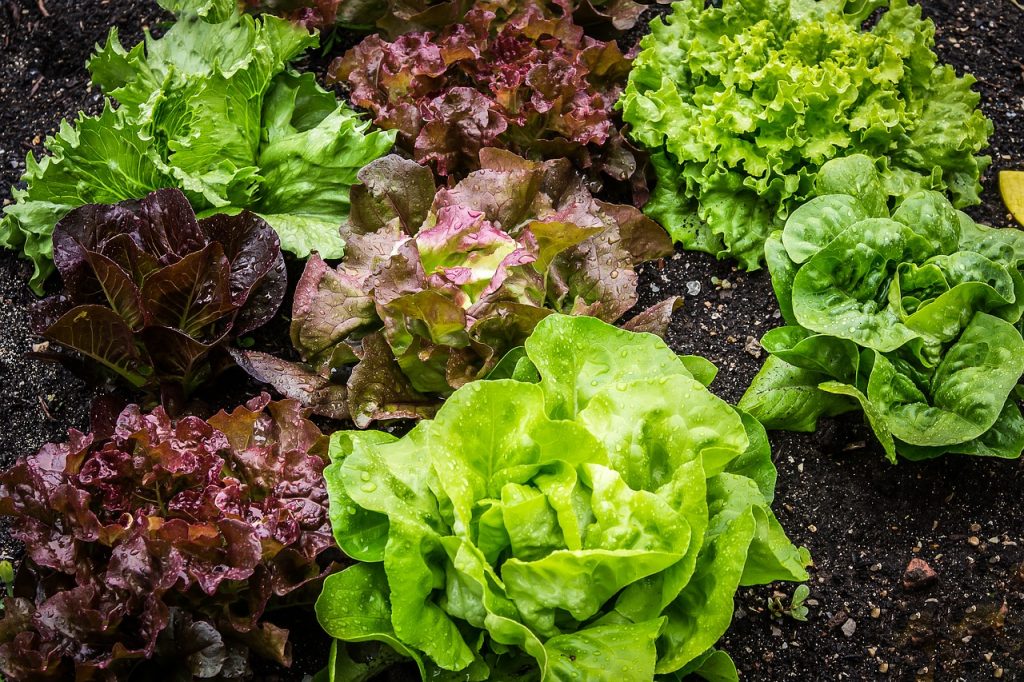
Related: Lettuce Pests And How to Get Rid of Them! | 7 Reasons Your Lettuce Is Dying
Firstly, have you ever wondered where lettuce comes from?
Well, lettuce is known to have originated from ancient Egypt. Wild lettuce was cultivated to reduce bitter leaves, making them palatable and seeds were used to make oil.
The botanical name for lettuce is Lactuca sativa and it’s part of the Asteraceae family including daisies and sunflowers.
So let’s find out how to grow bowls full of fresh lettuce for salads you can easily harvest from your garden at home.
Table of Contents
- Ideal Growing Conditions for Lettuce
- How to Grow Lettuce From Seed
- How to Grow Lettuce in Pots and Containers
- How to Grow Lettuce Indoors All Year Round
- Lettuce Varieties
- Is Rocket or Arugula Lettuce?
- Fertilizing Lettuce
- How Long Does It Take To Harvest Lettuce?
- Harvesting Lettuce
- Storing Lettuce
- Pests and Problems
- Conclusion
- Recommended Products
Ideal Growing Conditions for Lettuce
Lettuce is a cool-weather vegetable and best grown during spring and fall when temperatures are between 60-70F (15-21C).
For seed germination, the soil temperature is best between 50-80°F (10-26°C). You can measure soil temperature with this soil thermometer gauge.
Once air temperatures warm up and reach above 77°F (25°C), lettuce can start to ‘bolt’. This means the lettuce will flower and go to seed. When lettuce bolts, leaves become bitter to taste and I don’t recommend eating them.
As one of the fastest-growing vegetables, lettuce does best in soil rich in organic compost. The soil should be moist and free draining.
Watering is important, so give lettuce a drink every day or so. As a leafy green vegetable, lettuce loves a drink and without regular water, leaves may become bitter tasting.
Mulch the soil around the lettuce with an organic mulch to retain moisture and protect the shallow roots. Not only does mulch help protect the plant for drying out, but it also provides additional food for the soil as it breaks down over time.
For a continuous supply of lettuce to harvest in the growing season, sow new seeds every 2-4 weeks. This is known as succession planting.
How to Grow Lettuce From Seed
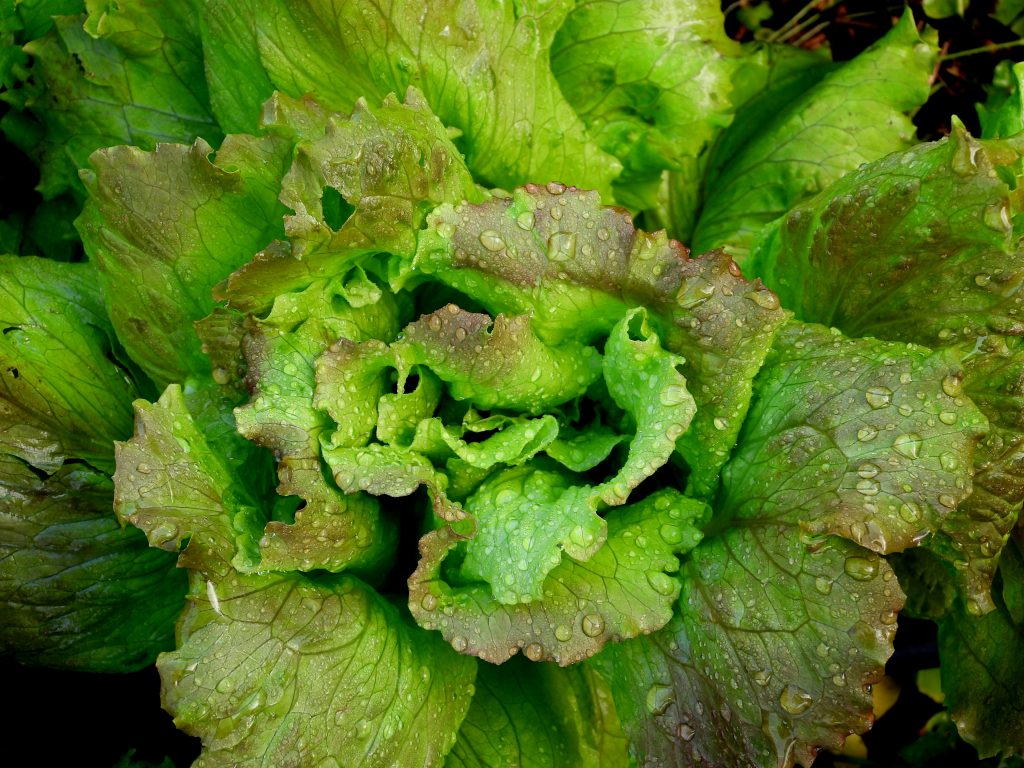
Due to the compact size of lettuce, it can be grown in even the smallest of garden spaces.
Lettuce grows best in a sunny spot with at least 6-8 hours of sunlight a day.
Seed can be sown 1/8 inch (3mm) deep and lightly covered with soil. Keep soil moist while seeds germinate.
Once the seedlings develop 4 true leaves, the smallest plants can be removed. This is also known as ‘thinning out’ and will allow room for the biggest and strongest lettuce plants to grow to maturity.
The tiny thinned out plants can either be replanted in the garden elsewhere or they can be eaten as microgreens.
Depending on the variety of lettuce, they are best planted 4-12 inches (10-30cm) apart.
How to Grow Lettuce in Pots and Containers
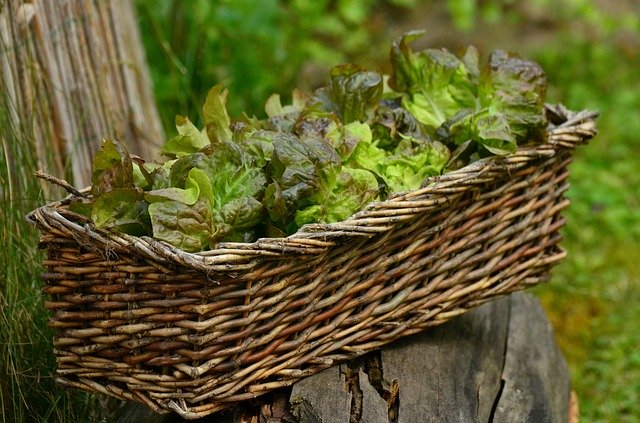
Because lettuce has shallow roots, it does very well in pots and containers. The conditions are much the same as growing lettuce in the ground.
Pot and container-grown lettuce are especially ideal for butterhead and loose-leaf varieties due to their cut-and-come-again nature and fast-growing nature.
Growing lettuce in pots or containers is ideal for small gardens or where space is a premium. Pots of lettuce are also perfect to grow on your patio or porch.
Choose a pot at least 6 inches (15cm) deep, which will provide enough soil depth for the lettuce roots. Use an organic potting mix to provide a healthy start.
Pots and containers can dry out faster than garden-grown lettuce, so keep an eye on the moisture level of the soil and water accordingly.
Position pots and containers of lettuce to receive 6-8 hours of sunlight a day.
Keep the soil well mulched with an organic mulch to help protect the shallow roots from drying out.
The number of lettuce plants you can grow in one pot will depend on the pot or container size as well as the variety of lettuce you choose to grow. As a guide, loose-leaf varieties will need appropriately 4 inches (10 cm) to grow small plants and up to 12 inches (30cm) for large plants.
How to Grow Lettuce Indoors All Year Round
The miracle of modern technology means you can grow lettuce indoors, all year round. So if your garden gets snowed under during winter or your climate is desert-like in summer and you would still love to harvest homegrown salad leaves, you can.
When it’s impossible to grow outdoors, this indoor hydroponic kit will allow you to grow up to six plants at a time. It’s designed to sit somewhere on your kitchen bench, making homegrown produce easy to harvest for use in lunches and dinner.
While garden-grown produce that’s been nurtured in soil and sun might be ideal, this growing option is amazing for those extreme weather seasons when outdoor gardening is difficult to impossible.
For more indoor garden kits you might like to read our buying guide Best Indoor Herb Garden Kit.
Lettuce Varieties
There are hundreds of lettuce varieties. Many of those available to home gardens are not found in grocery stores as they don’t store as well for long periods of time but are perfect for the home garden.
Garden grown lettuce is so much tastier than grocery store-bought varieties and they are absolutely perfect to pick fresh from the garden. By growing different varieties, home gardeners can ensure salads are exciting and flavorful.
Here’s a closer look at some of the more commonly known varieties:
Loose-Leaf Lettuce
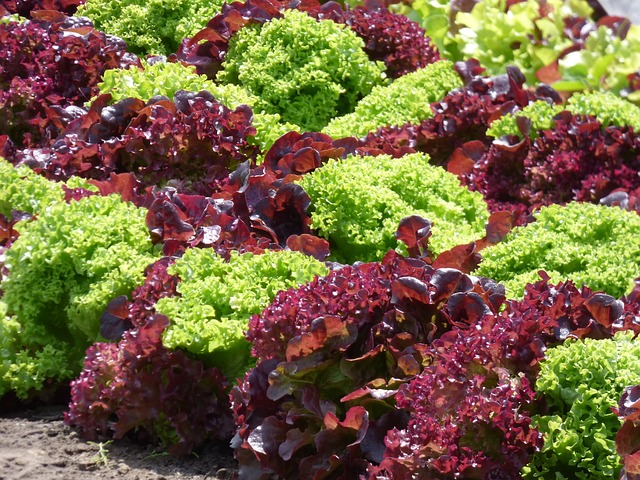
This variety does not form a head.
Loose-leaf lettuce are fast to grow, reaching maturity at around 45 days and considered the easiest to grow.
The loose-leaf lettuce variety comes in many different colors and textures. Colors range from reddish purple through to more common green and come in curly and frilly textures.
Leaves grow up along the plant stem and can be harvested from the bottom of the stem for cut-and-come-again lettuce leaves.
Head Lettuce
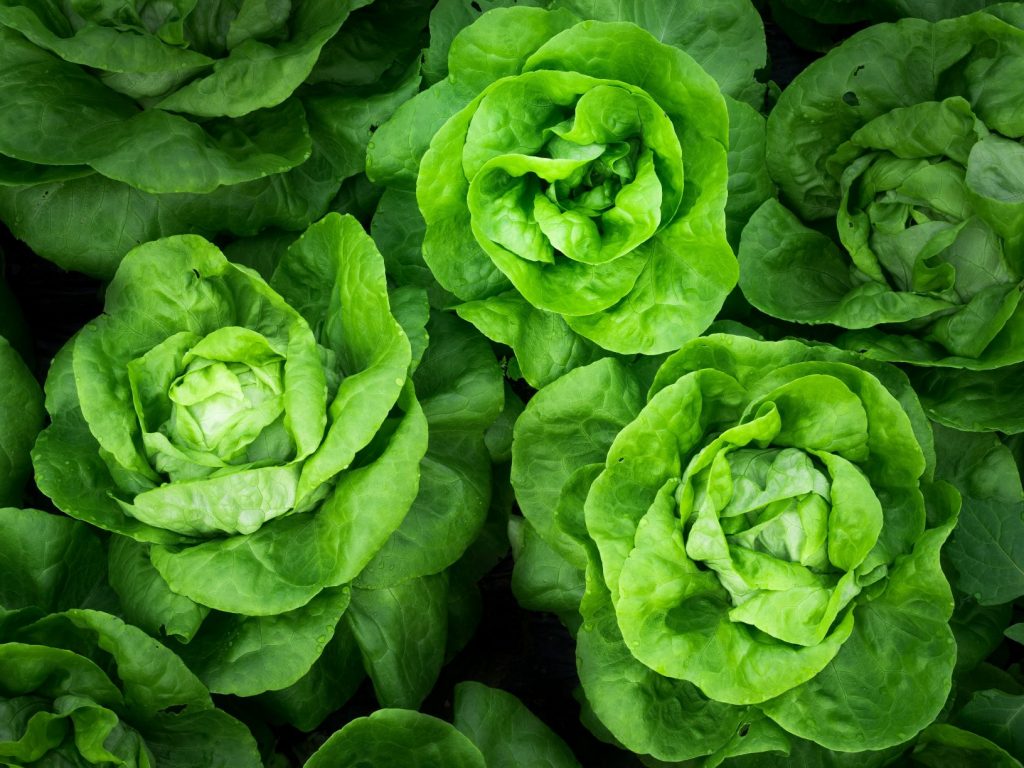
These are the crisphead, butterhead and cos or romaine.
Head lettuce can take up to 3 months to reach full size, though Butterhead lettuce is often harvested as a cut-and-come-again plant due to its loose forming head.
Is Rocket or Arugula Lettuce?
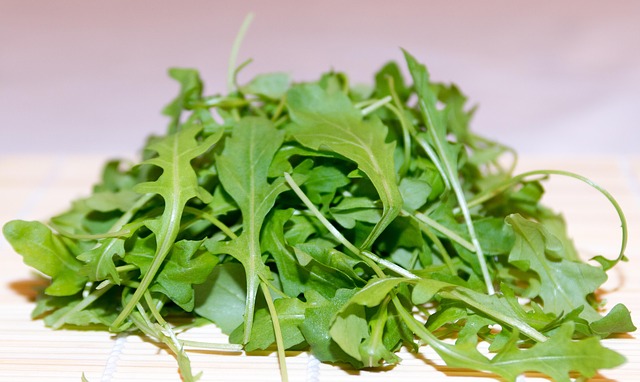
Rocket, also known as arugula, rugula or roquette, is actually part of the mustard family (botanically speaking it is the Brassicaceae family). This annual herb is often grown in addition to lettuce for its peppery flavor.
Tip: Wild rocket is so easy to grow. Also called perennial wall-rocket, this plant is a short-lived perennial meaning it will continue to grow year after year. It has a stronger flavor when compared to regular rocket and once it flowers and seeds in your garden, you will always have plants popping up on their own. Wild rocket is low maintenance and a welcome addition to my garden.
Related: Spots on Arugula? Causes and Solutions
Fertilizing Lettuce
For any new planting of lettuce, I like to ensure the soil is topped with a few inches of homemade compost. This helps feeds the soil and your new lettuce plants.
Because lettuce is a fast-growing crop, you can support them with an organic fertilizer such as a weekly feed of liquid seaweed.
You can purchase liquid seaweed here.
Using an organic mulch around the lettuce plant also feeds the plant and the soil as it slowly breaks down over time.
How Long Does It Take To Harvest Lettuce?
Depending on the lettuce variety, harvesting can usually begin from 6-8 weeks.
Head lettuce varieties, meaning you harvest the whole head of lettuce, usually take 3 months to reach maturity.
Harvesting Lettuce
For butterhead and loose-leaf varieties, harvest the outer leaves of the lettuce. The lettuce plant will continue to grow and produce more leaves to harvest in the coming days and weeks. These types of lettuce are known as cut-and-come-again and are my favorite variety to grow.
For head lettuce, the whole plant is usually harvested at once. The plant is cut at the base at soil level.
Lettuce is best harvested in the morning when they are still cool and leaves are full of water.
If you’re looking for delicious ways to eat lettuce, have a look at these Vegetable Lettuce Wraps here.
Storing Lettuce
The best tasting lettuce will be harvested straight from the garden and eaten within hours. But you can store lettuce in the fridge. The length of time lettuce will store well in the fridge will depend on the variety.
Generally, you can expect loose leaf lettuce to keep for a week by washing and drying the leaves, laying them on a paper towel to absorb moisture inside an airtight container and storing them in the crisper of your fridge.
Head lettuce will keep longer, between one to three weeks, if it remains whole, unwashed, wrapped in a paper towel, and stored in the crisper of the fridge.
Pests and Problems
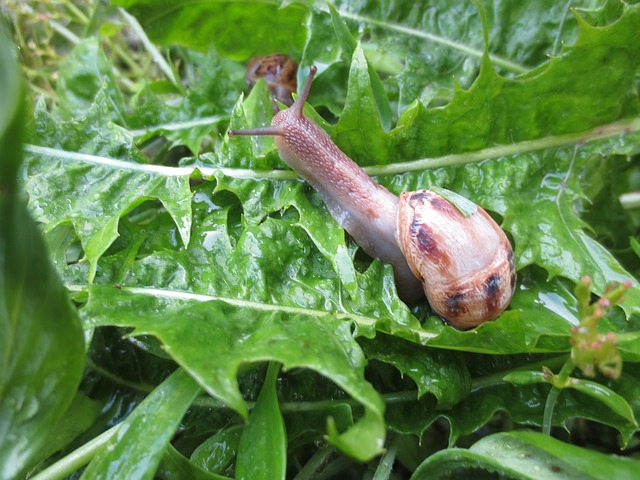
Snails, slugs and caterpillars love to munch on lettuce. Controls include traps, organic baits and hand removal.
Aphids can attack your lettuce patch. These little white bugs can be dealt with by using horticultural soap or neem oil. As well as encouraging natural predators in the garden, such as lady beetles, who feed off aphids.
Tipburn is a condition that turns lettuce leaves brown and causes them to curl. This is a result of inconsistent watering and can easily be fixed by removing the affected leaves and increasing water to the plant.
The best defence against pests and lettuce growing problems is a healthy plant and healthy soil. You can achieve this with great compost, organic fertilizer such as liquid seaweed, mulching the plant well and providing adequate water throughout the growing season.
Pests and problems will always be encountered in the garden to some degree. So plant a few extra lettuce plants to ensure there is enough to harvest for you and a few garden pests.
Conclusion
Growing lettuce is easy and rewarding. Most home gardens can accommodate lettuce as they take up very little space. But if space is at a premium, lettuce can easily be grown in pots on a patio and even indoors. And once you’ve experienced harvesting your own lettuce, you’ll never want to go back to store-bought lettuce again! So why not dig a space in your garden and grow your own lettuce?

Recommended Products
- Soil and Water Gauge – measure the pH level of soil as well as the moisture level.
- Soil Thermometer – measure the soil temperature.
- Indoor Hydroponic Kit – grow lettuce all year round indoors.
- Liquid Seaweed Fertilizer – support lettuce with a regular liquid feed.
- Horticultural Neem Oil – to assist with pest removal.
Further reading:
- Why Is My Lettuce Flowering? Causes and Solutions
- How To Grow Swiss Chard For Fast Leafy Green Vegetables
- How To Grow Sugar Snap Peas: Growing Guide And Tips
- How to Grow Radishes: the Easiest Vegetable to Grow
- Growing Kale: Planting, Caring, and Harvesting Kale
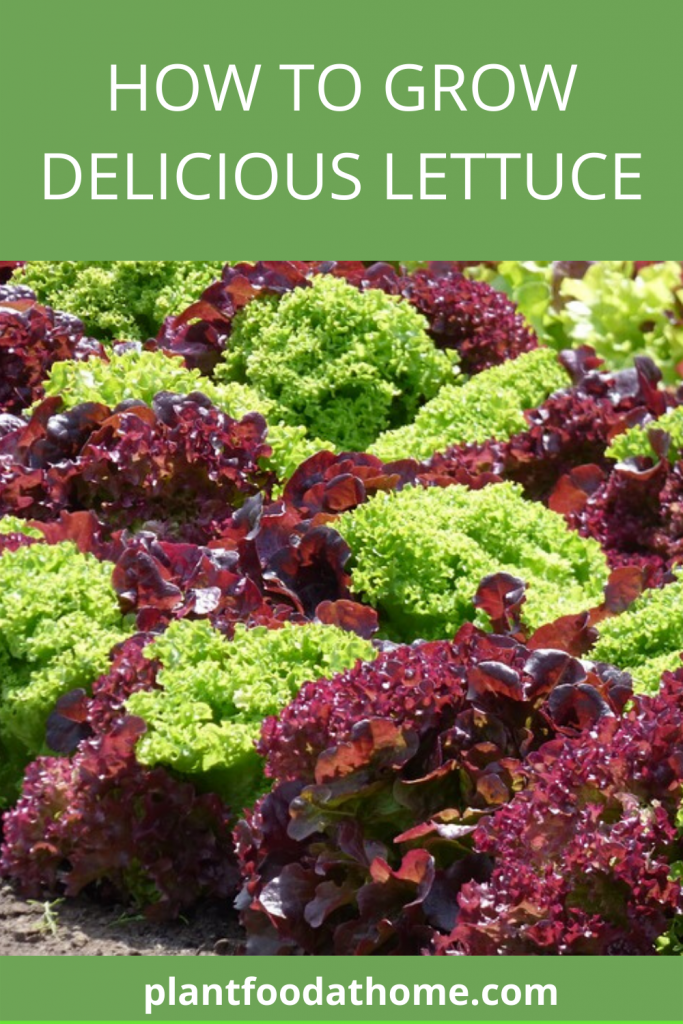

I finally found the best blog about growing lettuce. Thanks for the informative article. Will surely follow these amazing tips!